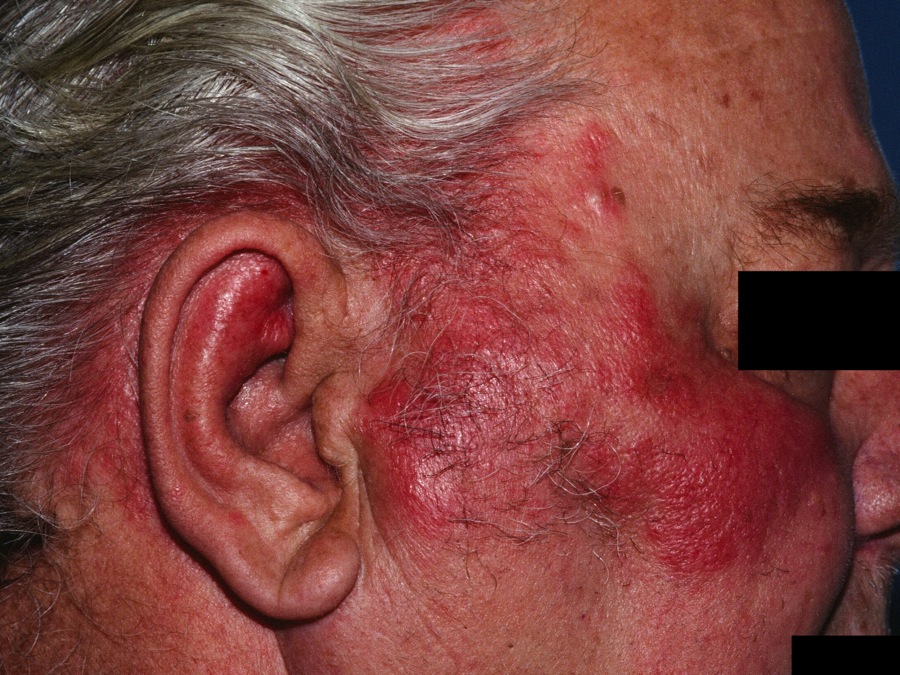
Cellulitis is a rapidly expanding bacterial infection of the skin. Impetigo is also a bacterial infection of the skin but is primarily confined to the superficial layers. Cellulitis involves deeper layers of the skin including the dermis. Erysipelas is a specific subset of cellulitis caused by streptococcus. See also bacterial infections of the skin here.
Clinically, one sees a warm, edematous, expanding plaque. The face and lower legs are common sites. On the lower legs, confusion with stasis dermatitis often occurs.
Necrotizing fasciitis is a more severe infection that can be life-threatening. It may be suspected when there are systemic signs (e.g., fever, chills) or if the skin shows more than just erythema and edema, e.g., hemorrhage, necrosis, or fluctuance.
The diagnosis is usually made clinically, however this is frought with misdiagnoses.
Scoring:
Raff et al created a prediction model for the diagnosis of lower extremity cellulitis, titled the ALT-70. This 4-variable prediction model relied on asymmetry (unilateral involvement), leukocytosis (white blood cell count ≥10 000/uL), tachycardia (heart rate ≥90 beats per minute), and an age of 70 years or older. The ALT-70 prediction model assigns point values to the presence or absence of each variable, with 0 to 2 points indicating an 83.3% or greater likelihood of pseudocellulitis and 5 points or more indicating an 82.2% or greater likelihood of true cellulitis, and is meant to identify patients who may benefit from dermatology consultation.
Thermal imaging detecting skin temperature has also been used effectively as a screening tool.
Any drainage should be cultured. In the absence of drainage, skin-biopsy specimens even with PCR and pyrosequencing, are usually unhelpful.
Homepage | Who is Dr. White? | Privacy Policy | FAQs | Use of Images | Contact Dr. White